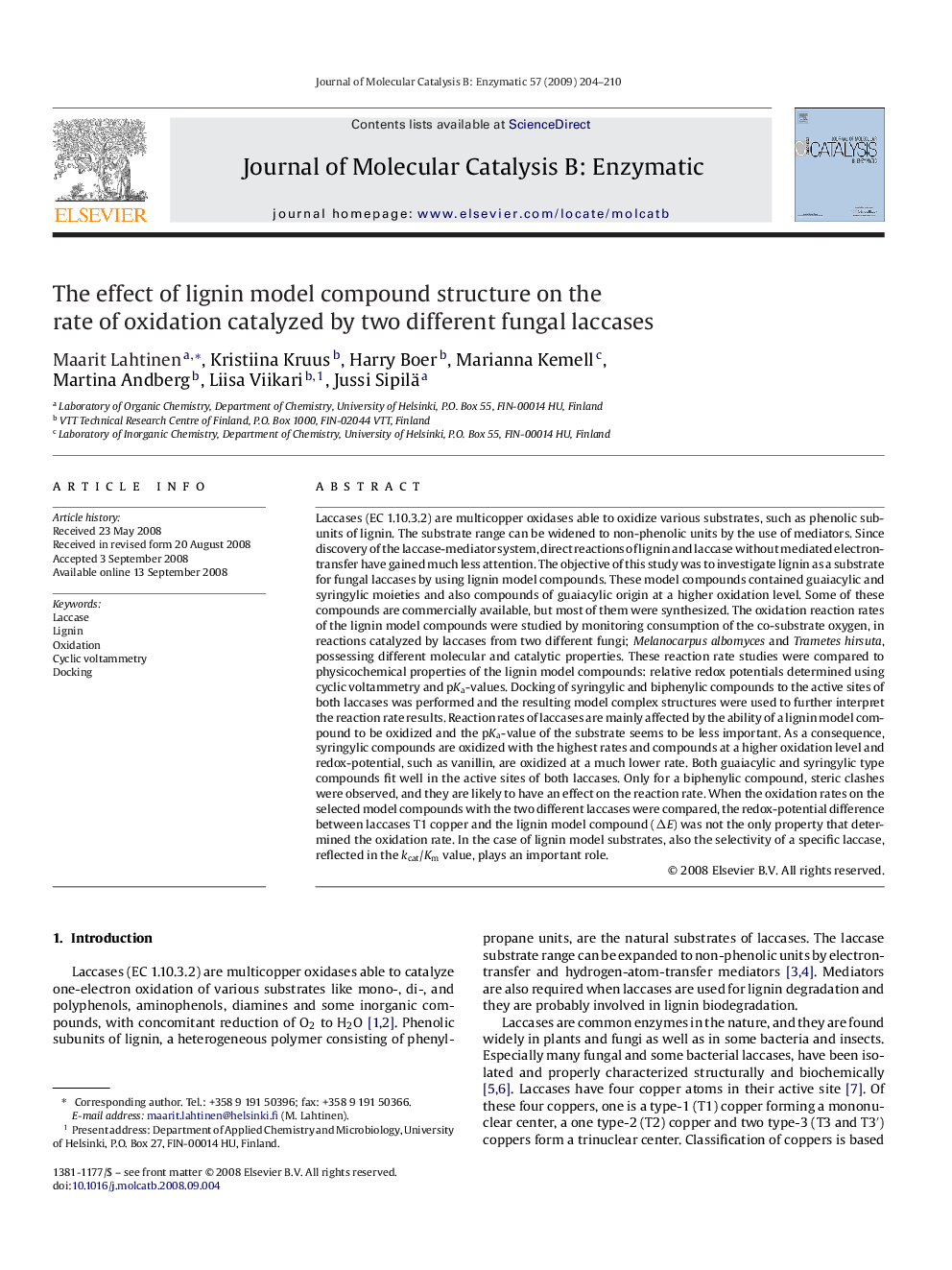| کد مقاله | کد نشریه | سال انتشار | مقاله انگلیسی | نسخه تمام متن |
|---|---|---|---|---|
| 70598 | 48838 | 2009 | 7 صفحه PDF | دانلود رایگان |

Laccases (EC 1.10.3.2) are multicopper oxidases able to oxidize various substrates, such as phenolic subunits of lignin. The substrate range can be widened to non-phenolic units by the use of mediators. Since discovery of the laccase-mediator system, direct reactions of lignin and laccase without mediated electron-transfer have gained much less attention. The objective of this study was to investigate lignin as a substrate for fungal laccases by using lignin model compounds. These model compounds contained guaiacylic and syringylic moieties and also compounds of guaiacylic origin at a higher oxidation level. Some of these compounds are commercially available, but most of them were synthesized. The oxidation reaction rates of the lignin model compounds were studied by monitoring consumption of the co-substrate oxygen, in reactions catalyzed by laccases from two different fungi; Melanocarpus albomyces and Trametes hirsuta, possessing different molecular and catalytic properties. These reaction rate studies were compared to physicochemical properties of the lignin model compounds: relative redox potentials determined using cyclic voltammetry and pKa-values. Docking of syringylic and biphenylic compounds to the active sites of both laccases was performed and the resulting model complex structures were used to further interpret the reaction rate results. Reaction rates of laccases are mainly affected by the ability of a lignin model compound to be oxidized and the pKa-value of the substrate seems to be less important. As a consequence, syringylic compounds are oxidized with the highest rates and compounds at a higher oxidation level and redox-potential, such as vanillin, are oxidized at a much lower rate. Both guaiacylic and syringylic type compounds fit well in the active sites of both laccases. Only for a biphenylic compound, steric clashes were observed, and they are likely to have an effect on the reaction rate. When the oxidation rates on the selected model compounds with the two different laccases were compared, the redox-potential difference between laccases T1 copper and the lignin model compound (ΔE) was not the only property that determined the oxidation rate. In the case of lignin model substrates, also the selectivity of a specific laccase, reflected in the kcat/Km value, plays an important role.
Journal: Journal of Molecular Catalysis B: Enzymatic - Volume 57, Issues 1–4, May 2009, Pages 204–210